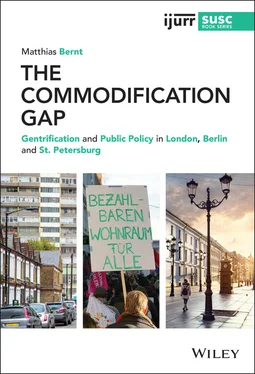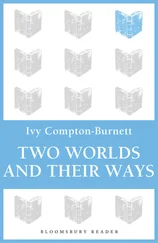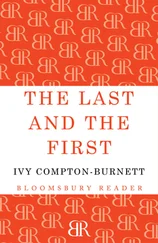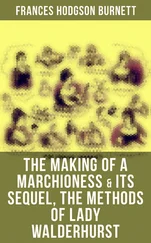Matthias Bernt - The Commodification Gap
Здесь есть возможность читать онлайн «Matthias Bernt - The Commodification Gap» — ознакомительный отрывок электронной книги совершенно бесплатно, а после прочтения отрывка купить полную версию. В некоторых случаях можно слушать аудио, скачать через торрент в формате fb2 и присутствует краткое содержание. Жанр: unrecognised, на английском языке. Описание произведения, (предисловие) а так же отзывы посетителей доступны на портале библиотеки ЛибКат.
- Название:The Commodification Gap
- Автор:
- Жанр:
- Год:неизвестен
- ISBN:нет данных
- Рейтинг книги:5 / 5. Голосов: 1
-
Избранное:Добавить в избранное
- Отзывы:
-
Ваша оценка:
- 100
- 1
- 2
- 3
- 4
- 5
The Commodification Gap: краткое содержание, описание и аннотация
Предлагаем к чтению аннотацию, описание, краткое содержание или предисловие (зависит от того, что написал сам автор книги «The Commodification Gap»). Если вы не нашли необходимую информацию о книге — напишите в комментариях, мы постараемся отыскать её.
—Jennifer Robinson, Professor of Human Geography, University College London, UK
—Manuel B. Aalbers, Division of Geography & Tourism, KU Leuven, Belgium The Commodity Gap
The Commodification Gap
The Commodification Gap
The Commodification Gap — читать онлайн ознакомительный отрывок
Ниже представлен текст книги, разбитый по страницам. Система сохранения места последней прочитанной страницы, позволяет с удобством читать онлайн бесплатно книгу «The Commodification Gap», без необходимости каждый раз заново искать на чём Вы остановились. Поставьте закладку, и сможете в любой момент перейти на страницу, на которой закончили чтение.
Интервал:
Закладка:
No matter the particular motivation, the essential goal of all comparison is not to describe something, but to understand and explain it. The point here is to ask the reasons why a particular comparison is made. If apples and bananas are compared with donkeys, we need to have an idea about what constitutes fruits in contrast to animals. Yet, what exactly is the link between a theory, say about fruits, and the need to compare? While most comparative researchers agree that comparisons refer to theory, there is no privileged stage of theory building in which it is most appropriate. Comparing can, thus, contribute to uncovering the limits of a theory, it can help to draw a contrast between cases and it can be used to suggest testable hypotheses. These hypotheses, in turn, can create demand for a new theory that can then be tested again by including new cases (Skopcol and Somers 1980). The relation between theory building and empirical comparative work is, thus, cyclical and there is no hierarchical (but rather a mutually reinforcing) relationship between theory and comparative empirical observation.
The current treatment of gentrification in urban studies as either a particular local experience, or a planetary urban phenomenon, occupies an uneasy position when examined against these potentials (see also Bernt 2016a). While individualising accounts have proven to work well for attacking the usefulness of gentrification theory for a specific case, they more often than not leave one wondering whether the problem is just a misclassification of an individual case (e.g. when the gentrification concept is applied to cases where gentrification doesn’t happen), a linguistic issue or something that is more deep‐seated and inherent in the concept of gentrification. Universalising accounts, on the contrary, often relegate differences to the role of contextual factors, local specificities or contingencies, seen as negligible for theory building. Here, the consequence is an immunisation of established theories, but hardly their advancement. In sum, both ways of comparison fall short. This results in a stalemate in which both sides employ more or less convincing evidence to support their claims, but leave existing theories untouched and fail to frame a way forward.
One reason for this lies in the particular limits that are specific to either of these forms of comparison. There have been elaborate discussions about the difficulties of comparing complex social phenomena (like revolutions or cities) that are characterised by ‘small n , many variables’ (Lijpart 1971) in the past, especially within the field of comparative history. As a consequence, manifold useful strategies for conducting comparisons have been proposed (see for example Przeworski and Teune 1970; Lijphart 1971; Sartori 1970, 1991; Smelser 1976; Tilly 1984; Skocpol 1979; Skocpol and Somers 1980; Ragin 1987). In this context, Charles Tilly (1984) has developed a widely cited typology that distinguishes four types of comparison along the two dimensions of scope and number (see Figure 1.1). Thereby, in scope, comparisons can range from quite particular (getting the case right) to quite general (getting the characteristics of all cases right) and in number, comparisons can range from single to multiple.
On this basis, Tilly (1984, pp. 82f.) distinguished between individualising, universalising, generalising (or variation finding) and encompassing comparison. In this scheme, individualising and universalising comparisons are antidotes: individualising comparisons contrast specific instances of a phenomenon as a means of grasping the particularities of each case, whereas universalising comparisons aim to establish that each instance of a phenomenon follows the same rule (ibid.). The point is that both types of comparison can be made, but each has a different function for different purposes. Individualising comparisons work well to illustrate a given theory. They can also be very effectively used to challenge the validity of a theory. The problem, however, is that they leave much to be desired when it comes to developing a new theory. Universalising comparisons, in contrast, are an effective means to go beyond the surface of similarities and dissimilarities and produce models and generalisations that allow for theorising. More often than not, the price for this is a neglect of differences.
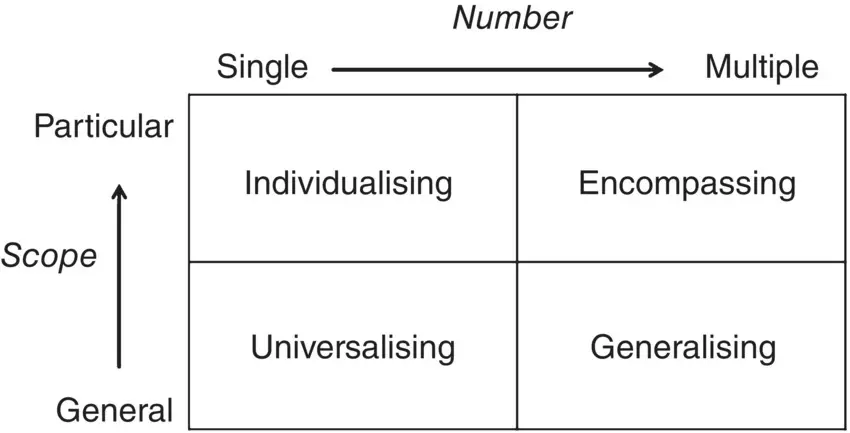
FIGURE 1.1 Types of comparison (Tilly 1984).
Expressed differently, both types of comparison have their particular strengths and weaknesses – but only in relation to a specific strategy in making a theoretical argument. What counts is not the comparison as such, but the theoretical argument. It is in this field that both individualising and universalising approaches have their Achilles’ heel.
Concepts and Causation
Necessarily, this leads us to matters of causation and explanation. How can empirical facts be connected to theory? How can we determine that something we can see and document can meaningfully be called ‘gentrification’? While the popular image of gentrification, reflected in a now globally popular blend of artists and cappuccino places, renovation activities and rising housing costs, seems to suggest an easily recognisable picture on the surface; however, the underlying substance of gentrification is more difficult to track. The reason for this is the fundamental philosophical difference between the essence of a phenomenon, its manifestation and its description. For this reason, this section will discuss ontological and epistemological problems of causation and conceptualisation, thereby sharpening our understanding of the relationships between concrete phenomena, abstraction and causation, as well as laying out some basic ideas about the value and the pitfalls of connecting empirical phenomena and theory. In what follows, I base my arguments on what has become known as ‘critical realism’ in the philosophy of social sciences (Bhaskar 1975; Harré 1986; Stones 1996; Yeung 1997; Sayer 1992, 2000).
One of the most common fallacies to be found in gentrification research is the treatment of gentrification as a ‘real’ phenomenon, instead of as a concept. More often than not, one encounters phrases like ‘gentrification has become a global phenomenon’, ‘gentrification has expanded beyond its places of origin’, ‘gentrification has reached into new neighbourhoods’, etc. What these phrases have in common is that they reify gentrification. They treat gentrification as something that has an equivalent in reality, i.e. as an objective fact that can be measured, described and assessed visually. If one examines the definition(s) of gentrification more closely, however, it soon becomes clear that what is usually referred to as gentrification is a bundle of empirically observable phenomena, rather than a singular object. Most importantly, these are:
1 an immigration of middle‐class households into areas where they were not prevalent before;
2 investments to upgrade houses and infrastructure (e.g. shops, or restaurants);
3 purchases or rentals of homes by more affluent buyers/renters;
4 rising house prices or rents;
5 a decline in the number of working‐class and other low‐income groups living in the area; and
6 a change of the social character of a neighbourhood.
In terms of observation, these are distinct empirical objects. What gentrification theories do is bundle together these objects under the term gentrification. The problem is that all these properties are also linked to social relations outside of gentrification. The immigration of middle‐class households has, thus, been linked to broader social, cultural and demographic shifts in Western societies (Ley 1996); the investment of money into housing has been connected to the growing financialisation (Aalbers 2012, 2016; Haila 2016) of the real estate sector; and the decline of working class housing occupants has been explained as an outcome of the professionalisation of occupational positions in ‘knowledge economies’ (Hamnett 2003), etc. Thus, what is usually coined gentrification is not only a wide umbrella, but the phenomena covered by it are co‐determined by factors that stand outside neighbourhood change. It is, thus, easily understandable why gentrification has been termed a ‘chaotic concept’ (Beauregard 1986) that lumps together unrelated phenomena and diverse explanations.
Читать дальшеИнтервал:
Закладка:
Похожие книги на «The Commodification Gap»
Представляем Вашему вниманию похожие книги на «The Commodification Gap» списком для выбора. Мы отобрали схожую по названию и смыслу литературу в надежде предоставить читателям больше вариантов отыскать новые, интересные, ещё непрочитанные произведения.
Обсуждение, отзывы о книге «The Commodification Gap» и просто собственные мнения читателей. Оставьте ваши комментарии, напишите, что Вы думаете о произведении, его смысле или главных героях. Укажите что конкретно понравилось, а что нет, и почему Вы так считаете.
